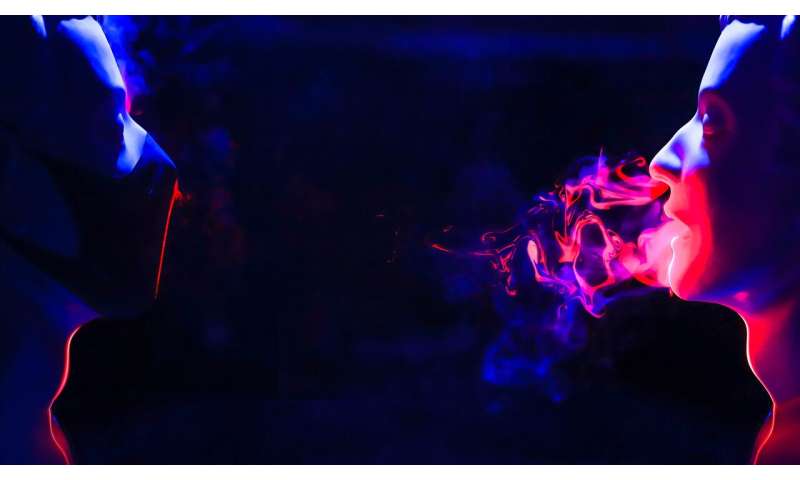
An award-winning research image produced by a project at Cork Institute of Technology applies imaging techniques developed for astrophysics to see how effective various textiles are at stopping the flow of exhaled droplets, when they are used for DIY face masks.
Wearing a mask or face covering is one of the relatively simple steps that people can take to slow the spread of the virus during the COVID-19 pandemic. But how effective are the materials that people use to make their own facial coverings?
A project at Cork Institute of Technology, funded by Science Foundation Ireland, applies imaging techniques developed for astrophysics to see how effective various textiles are at stopping the flow of exhaled droplets. These tiny droplets can carry the virus from a person’s mouth or airways out into the surrounding environment. By measuring how well (or not) different materials stop the flow of these droplets, the project will provide performance-based information for decisions on the widespread use of masks.
The research image seen here, was captured by Dr. Niall Smith, Head of Research at Cork Institute of Technology / Head of Blackrock Castle Observatory, and recently won the SFI Research Image of the year award. This research was undertaken as part of a multidisciplinary project funded under the COVID-19 Rapid Response Research & Innovation Program, which includes researchers in photonics, astrophysics, product design and virology. It is supported by Andor Technologies (a photonics company based in Belfast), who aresponsoring the ultra-low-level imager than will enable the research team to detect the smallestpossible droplets.
Dr. Niall Smith, Head of Research at Cork Institute of Technologyand Head of CIT Blackrock Castle Observatory, says: “It is critically important that we wear masks wherever social distancing is challenging, but not all masks perform equally well at suppressing droplets. Our research will enable us to directly measure the number of droplets of different sizes that are exhaled through masks composed of different materials, measurements which have not been made in this way before. CIT researchers based in the CAPPA Photonics Research Center and the CIT Blackrock Castle Observatory will use their combined expertise in a truly novel experimental setup.It is exciting to see the technique we developed at the CIT Blackrock Castle Observatory to measure variations in the brightness of terrestrial objects being used to directly support public health. It is another example of the importance of funding fundamental science.”
The use of masks and face-coverings made from material that can slow the spread of the COVID-19 virus is an important part of tackling the pandemic. For DIY masks, we need to know what inexpensive, comfortable and available materials are best suited to suppress the virus.The project will use a direct imaging method that was initially developed for use in astrophysics. The researchers will use this method to measure the path of exhaled droplets (in the range1micronupwards) through commonly available mask textiles during normal behaviors such as speaking, speaking loudly and coughing.
Source: Read Full Article
